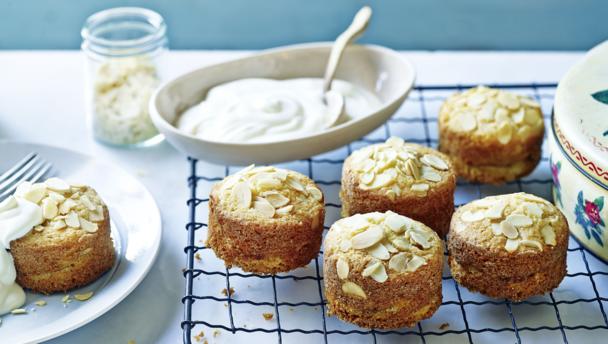

By Mary Berry
The French version of soured cream, crème fraîche is twice as rich and twice as thick. It's made from pasteurised cows' milk to which a lactic bacteria culture has been added. This thickens the cream and gives it a distinctive sharp flavour.
 Salmon, fennel and pea risotto
Salmon, fennel and pea risotto
 Slow cooker chicken and butternut squash stew
Slow cooker chicken and butternut squash stew
 Chicken and bacon lattice pie
Chicken and bacon lattice pie
 Sweet onions with lentil stew
Sweet onions with lentil stew
 Waldorf salad with grilled mackerel
Waldorf salad with grilled mackerel
 Gingerbread pancakes with Parma ham and maple syrup
Gingerbread pancakes with Parma ham and maple syrup
 Finnish pancakes
Finnish pancakes
 Hot smoked salmon, beetroot salad and horseradish crème fraîche
Hot smoked salmon, beetroot salad and horseradish crème fraîche
 Prawn cocktail
Prawn cocktail
 Braised Savoy cabbage with bacon
Braised Savoy cabbage with bacon
 Butternut squash, sage and crème fraîche mash
Butternut squash, sage and crème fraîche mash
 Rhubarb fool with lemongrass
Rhubarb fool with lemongrass
 Mulled wine baked fruit
Mulled wine baked fruit
 Mini apple and almond cakes
Mini apple and almond cakes
The best crème fraîche comes from a strictly controlled area of Normandy called Isigny-sur-Mer and it’s sold in larger supermarkets here. A half-fat version of crème fraîche is available from some supermarkets. Plain full-fat yoghurt can be used as a substitute for crème fraîche in cooking as long as you heat it gently – adding a little cornflour can help prevent it from separating.
Crème fraîche is sold in tubs and has a longer shelf-life than double cream. Store it in the fridge for a couple of weeks and use it as and when you need it.
Richer than soured cream, crème fraîche can be used to lace soups, sauces and stews or can be spooned over puddings and stirred into sweet dishes. It isn’t suitable for whipping though.
Type the ingredients you want to use, then click Go. For better results you can use quotation marks around phrases (e.g. "chicken breast"). Alternatively you can search by chef, programme, cuisine, diet, or dish (e.g. Lasagne).